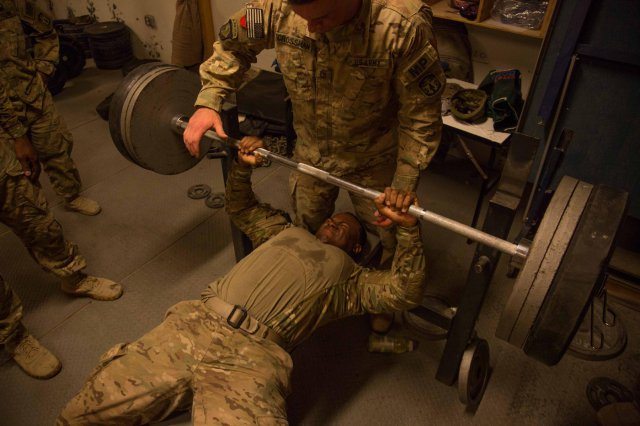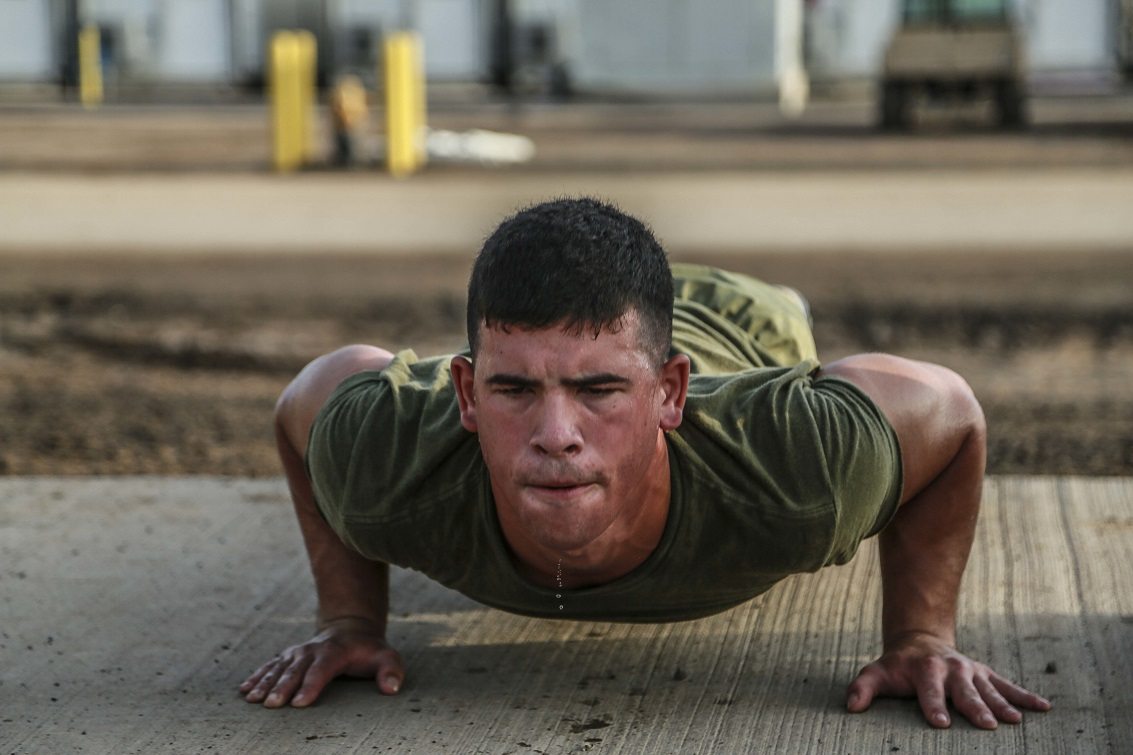Introduction
The push-up is an iconic exercise that has gotten a bit of a bad rap in recent years. In the old days, the push-up was declared to be one of the best exercises for building the chest, shoulders, and arms. The old-time strongmen were right! The push-up is outstanding in this regard, so what’s the problem?
As I see it, there are two primary issues. The first is technique and the second is high reps. The prime movers for the push-up are the pectoralis major, a fast twitch Type IIb muscle fiber. The next in line are the triceps which are a mixed fiber type but a small muscle group to handle 60-80% of your bodyweight. The pectoralis major is designed for fast, explosive action, and yet it is certainly capable of pulling off endurance. The catch is that the approach most people and institutions take is all wrong. What most people do it train the push-up with too much of an endurance focus and turn forward pressing into a slow and weak movement. What you need to understand is that if you train the push-up with explosive volume, the stamina comes along for the ride.
High Rep Push-ups are Dumb
Here’s a simple question. When, in any activity, will I ever be required to forward press my arms 50-80 times in a row? Especially against a load equal to 60-80% of my body weight? Go ahead, I’ll wait…
Still waiting…
The answer is… Never. The only thing that even comes close is fighting, which requires punching and pushing. Any fighter and grappler will tell you that you need pushing to be very strong and explosive and you need strength-stamina in your punching. You also need slow grinding strength, especially in grappling to create and maintain space and distance. This slow stuff will be against the body weight of your opponent, as will the powerful pushing. The strength-stamina is for the lightweight load of your arms. Thus, you need explosive, fast twitch ability; you need quasi-isometric strength and submaximal strength-stamina. My friends, these things are not opposing, they are complimentary if you train them right and let me assure you, long sets of push-ups are all wrong!
The push-up is a fantastic exercise for the chest and shoulder girdle, but we must recognize what we are doing. When the push-up is performed correctly, the load is 64% of your bodyweight. If you are the average man and are at your proper body composition, that load is 105-115lbs. Every man should be at his proper body composition and be able to bench press 150% of that bodyweight. For me, at 68” my ideal body weight is 165lbs and I should have a bench press 1RM of 250lbs. 64% of my bodyweight equals 42% of my 1RM. That is encouraging news because if I do have a 250lb 1RM, then 106lbs (42%1RM) is low enough to be an endurance zone for me. There’s just one problem…
The thing is, having a 250lb 1RM bench press has very little if anything to do with the ability to crank out 50-80 push-ups because that activity requires a different dominant energy system, different muscle fiber recruitment emphasis and different neurological activation of stabilizer and neutralizing muscles. The idea of getting stamina by increasing a 1RM is folly. You must specifically train for stamina. In fact, this idea of strength first is worthless. You would be astonished at how strong and capable you become by training for stamina. But what kind of stamina?
It’s time to change the way you look at stamina forever. Get rid of the gym mentality. Set aside this idea of maximal strength. Forget about hypertrophy. Banish the internet meme of the skinny marathon runner. It’s time to up your game.

Introducing Modified Cluster Training
Let’s begin with a question: How much work of a specific force output can you do? In the push-up, you need to produce enough power to accelerate from the ground to the lock out position. How many times can you do that before your ability to generate that much force tapers off? You’ve felt it on those max sets. The first 10 are easy. The second ten start to burn. The third 10 are a kick in the balls, and you’re lucky to knock out another 10 before you’re forced to rest. Only the real studs make it to 50 reps. Force production ability decreases with every rep for a whole bunch of reasons from tissue stress to acid build up to running out of metabolic fuel sources and more. But there is a way to train that meets your need for explosiveness and stamina that is used by professional athletes worldwide. What I am about to introduce to you is an old school Russian method of training that will solve our problems.
Cluster training is an old method of high-intensity training. You will often see it used for building strength, but I like to modify it for a broad variety of stamina requirements. It’s a modification of volume training called density training. It’s called cluster training because every set is a cluster of reps separated by micro-rest intervals. This allows the muscles to restore Phosphocreatine (PCr) making it possible to perform more work per set, thus increasing the volume of weight lifted in a specific period of time (density).
When training the push-up, we need to maintain speed and force output. There are devices these days that can measure this in watts of m/s but you’re more than capable of approximating it yourself. Because our output decreases as the duration of the set increases, what we will do is split the set up to allow for micro-rests. Here is what it will look like:
1. Perform 5 push-ups in perfect form and as fast as is required to comfortably come into the lockout position.
2. At the end of the 5th rep, come to your knees, hit a timer for 5-30 seconds and shake out your muscles and breathe.
3. When the timer beeps, repeat what you just did.
4. Repeat this process until you have performed 3-5 of these. That is Set #1.
5. Get up and walk around for a 3-5 minute rest interval.
6. Repeat for 3-5 sets. The key indicator to stop is when your form breaks down and you feel yourself slow down.
7. Stretch well and hydrate
8. Perform 1-2 times per week.
There is an easy way to know if you’ve taken on too much. If you can’t make it to set #4, cut your reps in half. If you get through set#5 with plenty of gas in the tank, add 1 rep next time. Test yourself every couple of weeks to see how many reps you can perform without stopping, resting, or significantly slowing down. Your goal is 50-55 reps.
When you can crank out 50-55 reps straight on your push-up evaluation it’s time to add weight. Use a weight vest and add weight in 2-4kg increments. You may want to decrease your reps my 1 or 2 when you do this. When you can perform 50 reps straight on and evaluation with that load, add 2-4kg again and repeat. When do you stop? I wouldn’t per se. I recommend trying to get to the point where you can do 40-50 perfect push ups with 16kg and then perform this training as maintenance once per week. For your other training session, use only bodyweight and again just worry about maintenance, or better yet, use the same method and work on a heavy bag starting with 4oz gloves and working up to 16oz gloves.
No Bench Pressing
I can already see people’s hands going up wondering if they can use this for the bench press. Technically, yes. However, I’m telling you not too. The reason is that the Bench press uses an unrealistic range of motion that has a very nasty reputation for causing injury. Second, the bench press is a supported exercise, meaning it requires a supportive piece of equipment. The problem with that is that supported exercises have next to zero carry-over to the real world. The push-up is great for preparing you for the real world, the bench press sucks at this so don’t do it. You’ll see this if you transfer a day of training to the heavy bag when impact force and dynamic bracing through the feet are required.
Challenge
I challenge you to try cluster training for 30 days. That’s just eight training sessions. Keep track of your numbers and tell us how well it worked for you in the Spotter Up Team Room on Facebook.
Images from Google images.
Image U.S. Marine Corps photo by Sgt. Steve H. Lopez/Released


Impressive research and approach … I want to try this!